



Take nothing but photos, leave nothing but footprints. Please respect the park and the rangers.
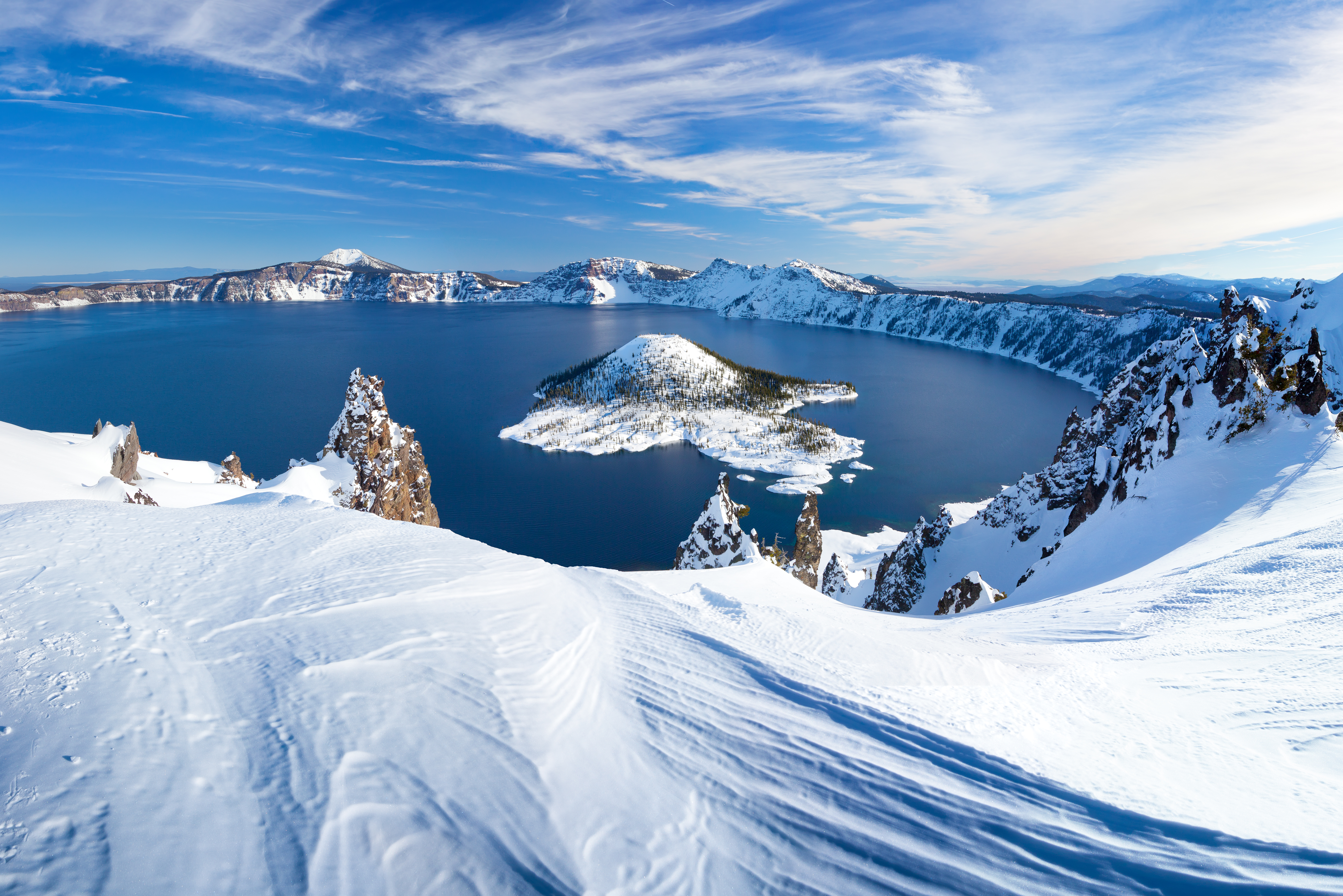
Are you visiting Southern Oregon or the Rogue Valley and have Crater Lake on your bucket list? It is definitely a once-in-a-lifetime must see. We highly recommending spending as much time as possible in this magical place. Crater Lake is much more than a stopover to take fabulous pics - hiking, biking, sightseeing, and stargazing can all be done at this breathtaking location.
Crater Lake National Park has some of the most breathtaking outdoor exploration you will ever do. There are many hiking trails and 30 overlooks around the rim for you to explore! Explore our top rim overlooks, or find them all on their map or park brochure when you arrive.
DRIVE THE RIM
The Rim Drive is a 33-mile road around the lake with over 30 pull outs which offer awesome views of Crater Lake’s volcanic scenery. The drive takes about 2-3 hours, and it’s one of America’s most scenic byways. The full loop is usually open from early July to late October.
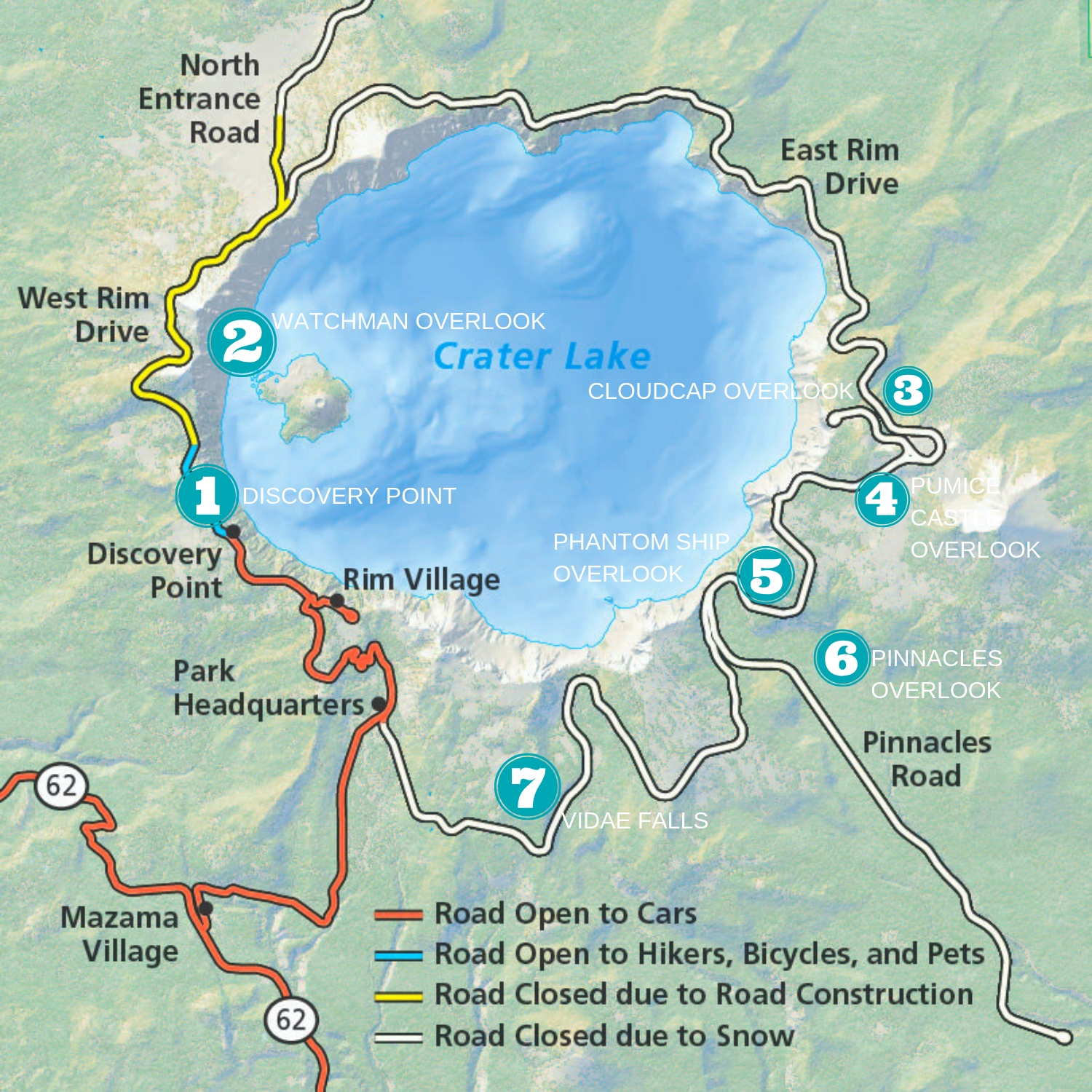
1. Discovery Point
In 1853, it was near this spot that gold prospector John Hillman became the first European-American to stumble across what he called “Deep Blue Lake.”
2.Watchman Overlook
This pullout offers amazing views of Wizard Island, a cinder cone that erupted out of Crater Lake over 7,300 years ago. To find the pullout, drive 3.8 miles west of Rim Village and look for a viewpoint lined with wood fences.
3. Cloudcap Overlook
This overlook is located at the end of a 1-mile spur road, the highest paved road in Oregon.
4. Pumice Castle Overlook
See one of the park’s most colorful features — a layer of orange pumice rock that was eroded into the shape of a medieval castle. Watch for the unmarked viewpoint, located 1.1 miles west of the Cloudcap Overlook junction.
5. Phantom Ship Overlook
Crater Lake’s “other island” is hard to spot. While it resembles a small sailboat, the island is the size of a 16-story building! It’s made of erosion-resistant lava and is 400,000 years old — the oldest exposed rock within the caldera.
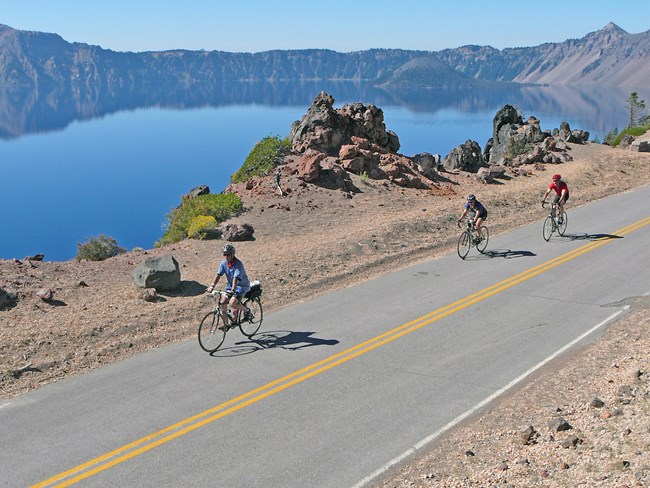
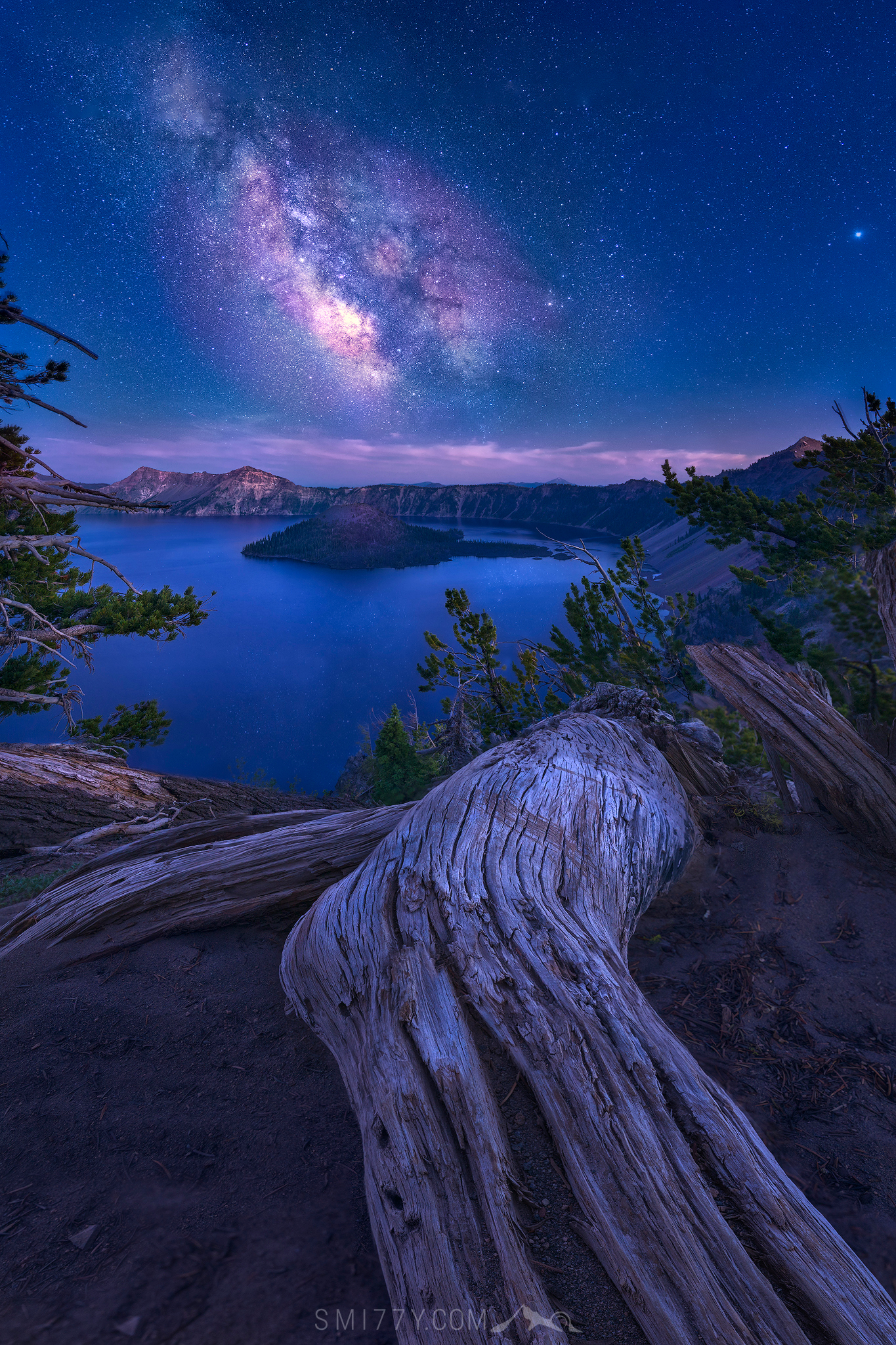
Did you know that Crater lake is listed by the National Park Service Dark Sky team as among the top ten dark sky locations in the national park system? If you are staying overnight, it is a sight you won't want to miss - we promise you that!
Stargazing is best on nights without cloud cover or on a full moon. With no light pollution, the naked eye can see thousands of stars, including the Milky Way Galaxy and several planets.
For an in-depth look into the history of stargazing at the park, check out the Crater lake Institute.
There are numerous ways to stay overnight at the park, whether you book a room in the lodge, camp or backpack, you can find the overnight information you will need at the Crater Lake National Park service website.
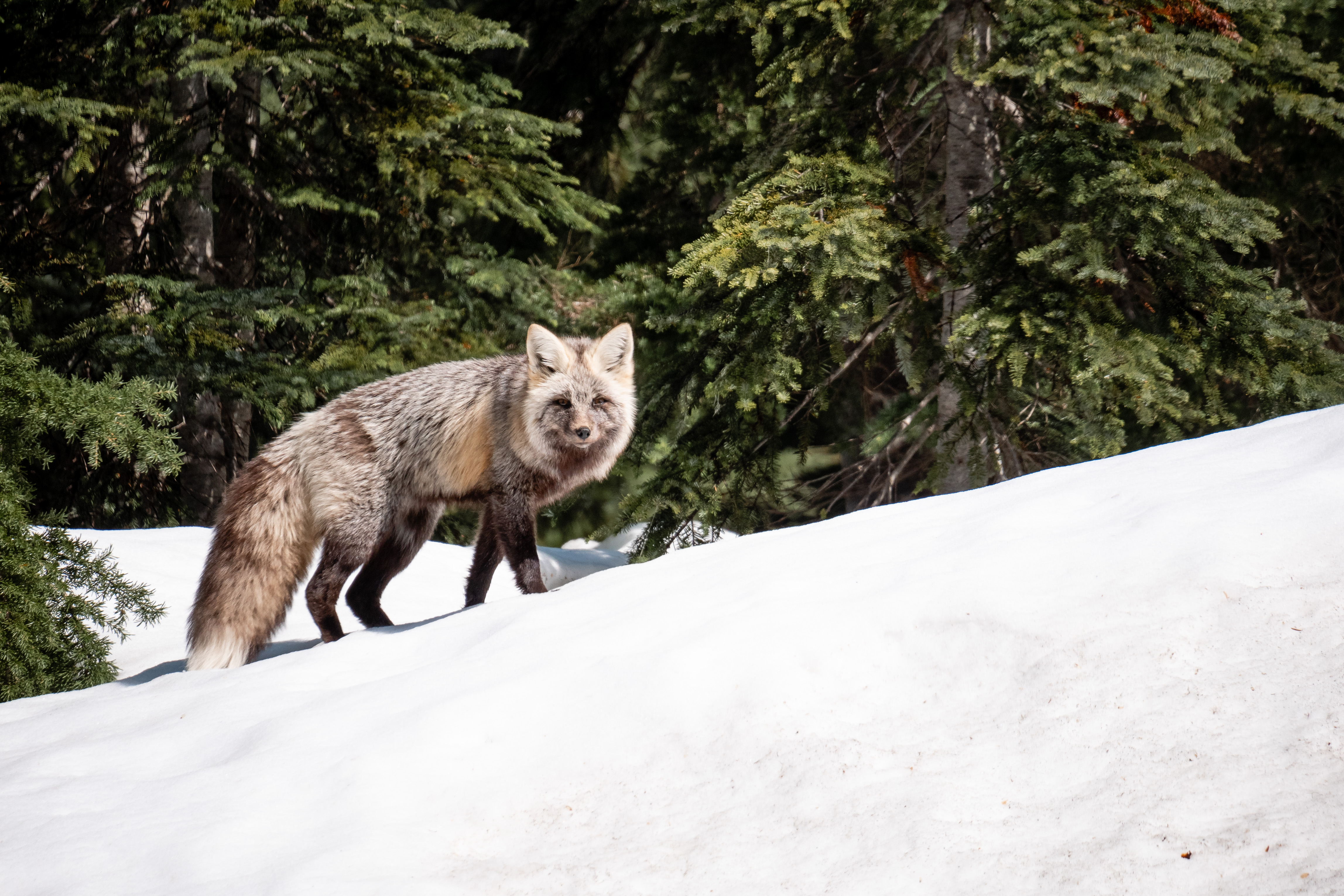
While these animals are commonly observed along Rim Drive and popular trails,
For a complete list of species in the park, see NPS species page.
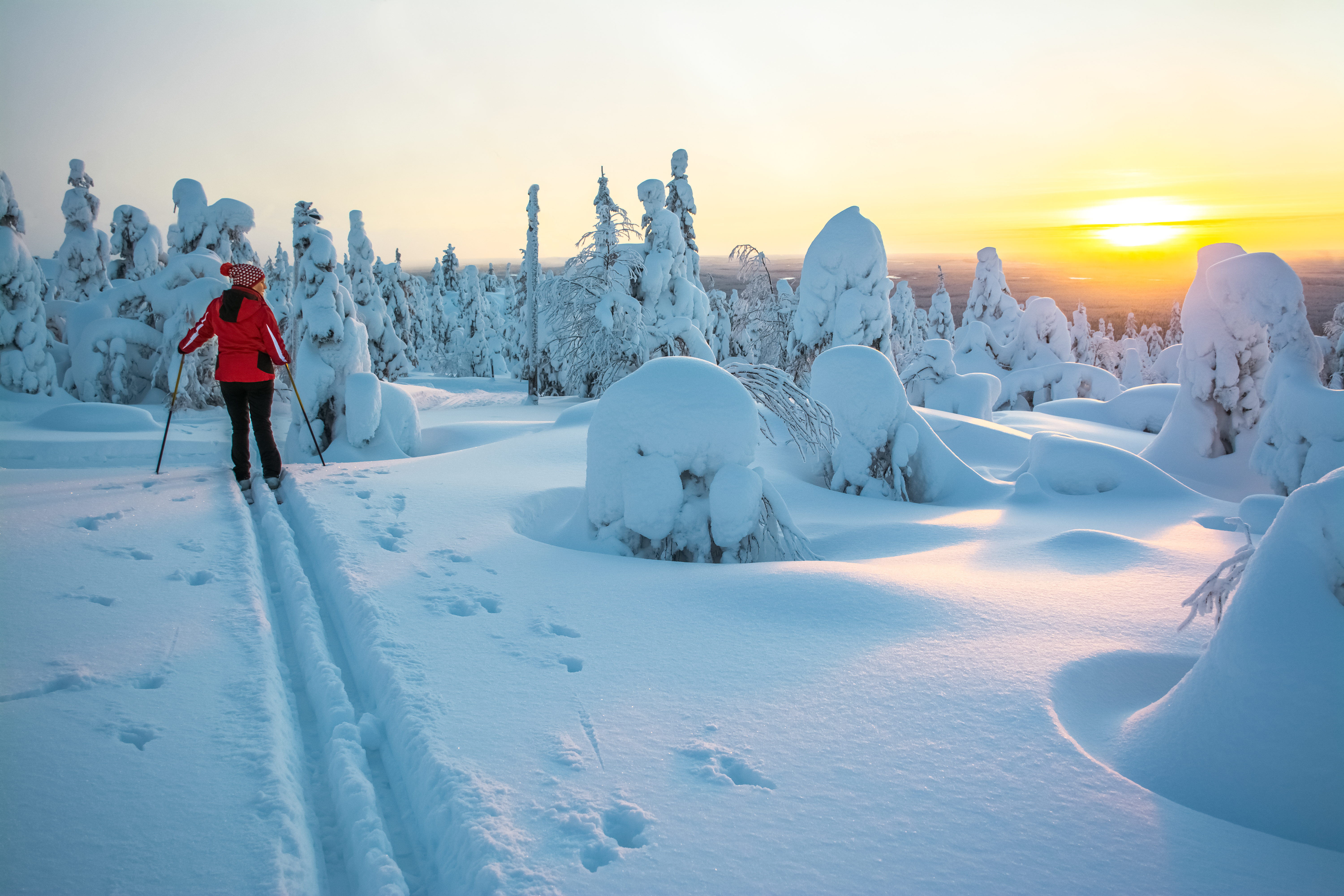
The park features a variety of marked and unmarked routes for cross-country skiing. Choose a route through forests, along West Rim Drive to lake overlooks, or to Vidae Falls along the East Rim Drive. Maps and descriptions of the ski trails are available in the park newspaper. None of the routes are groomed, and they are sometimes deep and difficult to follow. Conditions may range from powder to slush or ice. Skiers may need to break trail. Snowshoers often use the same routes.
Ski and snowshoe rentals are not available in the park, but many outfitters outside the park rent cross-country skis and/or snowshoes.
The Alerts & Conditions page has current information on road closures, park alerts, and weather.
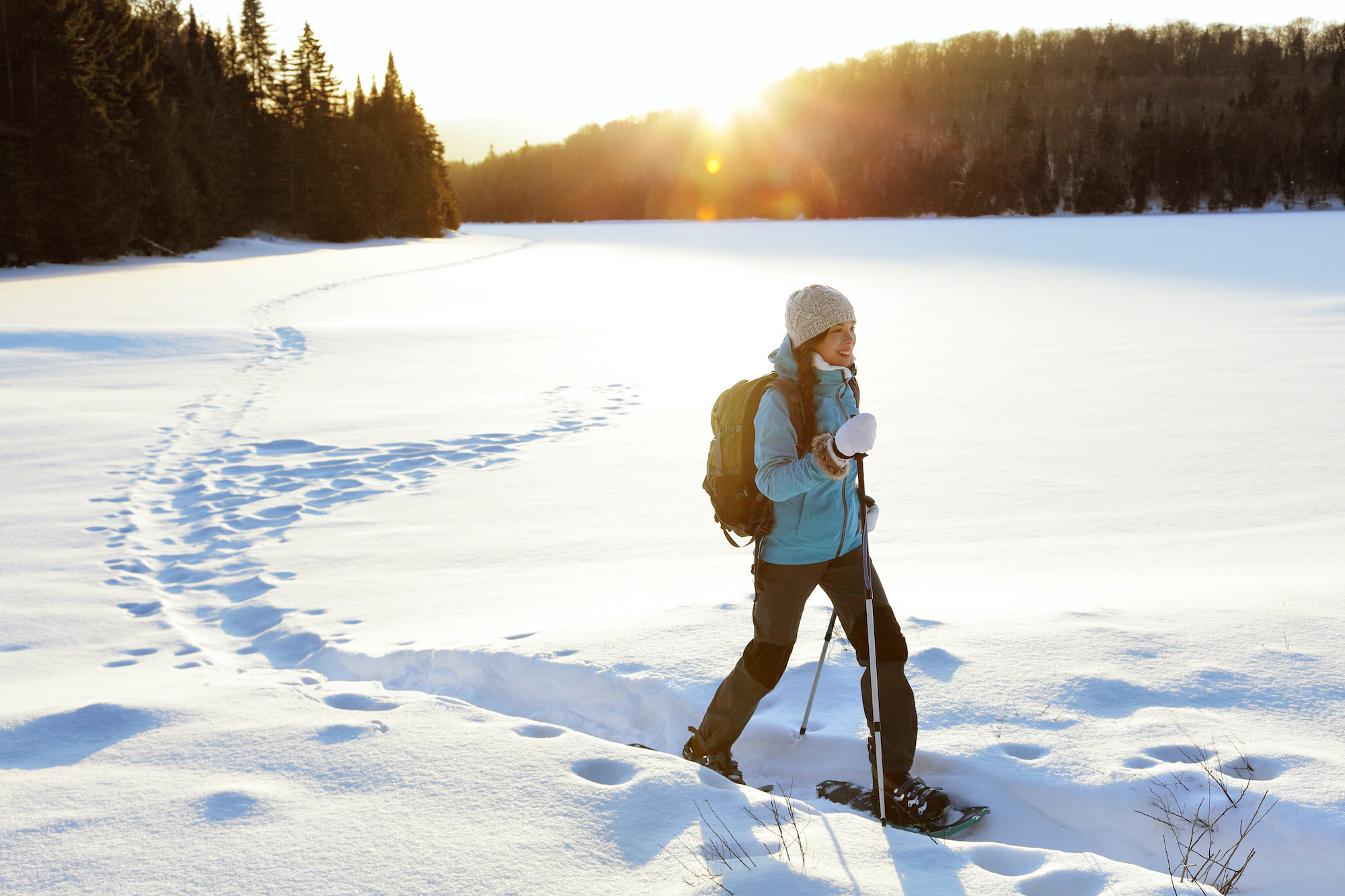
Snowshoeing
Strapping on a pair of snowshoes is a great way to experience the changes that winter brings to Crater Lake National Park. Mounds of snowy waves cover downed trees and saplings, and forest shadows stretch across the sparkling snow. Meadows become white wonderlands. Snowshoe for a short distance or plan a full day along an established trail. First-time visitors are advised to follow one of the park’s ski routes. Maps are found in the park newspaper.
Wearing warm, waterproof clothing and footwear, staying hydrated, and having a plan increases your safety and enjoyment while snowshoeing. Ski and snowshoe rentals are not available in the park, but many outfitters outside the park rent cross-country skis and/or snowshoes.
Rangers lead guided snowshoe walks are not being offered for the 2021-2022 season.
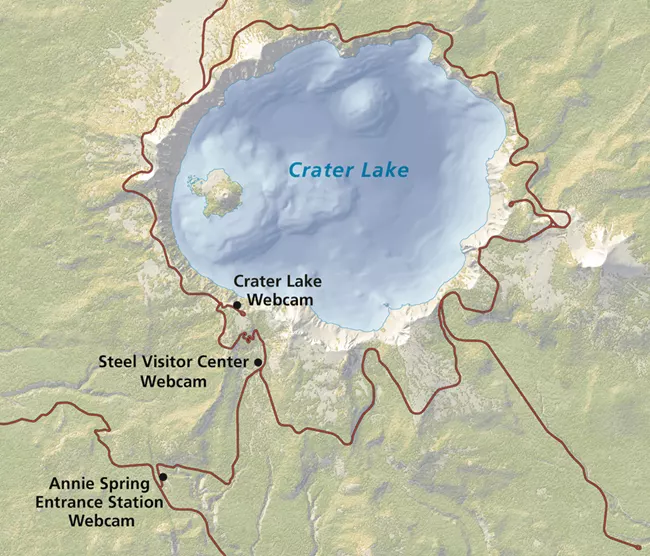
Ready to plan your trip to Crater Lake? Be sure to check out the current weather conditions and road closures! To the right is a map of exactly where each of the webcams are around the lake. All information courtesy of the National Park Service.
Is Crater Lake visible today? Sometimes the lake is hidden by clouds, especially in the winter. This view looks north across the lake from the Sinnott Overlook at Rim Village (elevation 7,100 feet). On a clear day, it takes in Wizard Island, Llao Rock, and Mount Thielsen. Refresh the page to update the view.
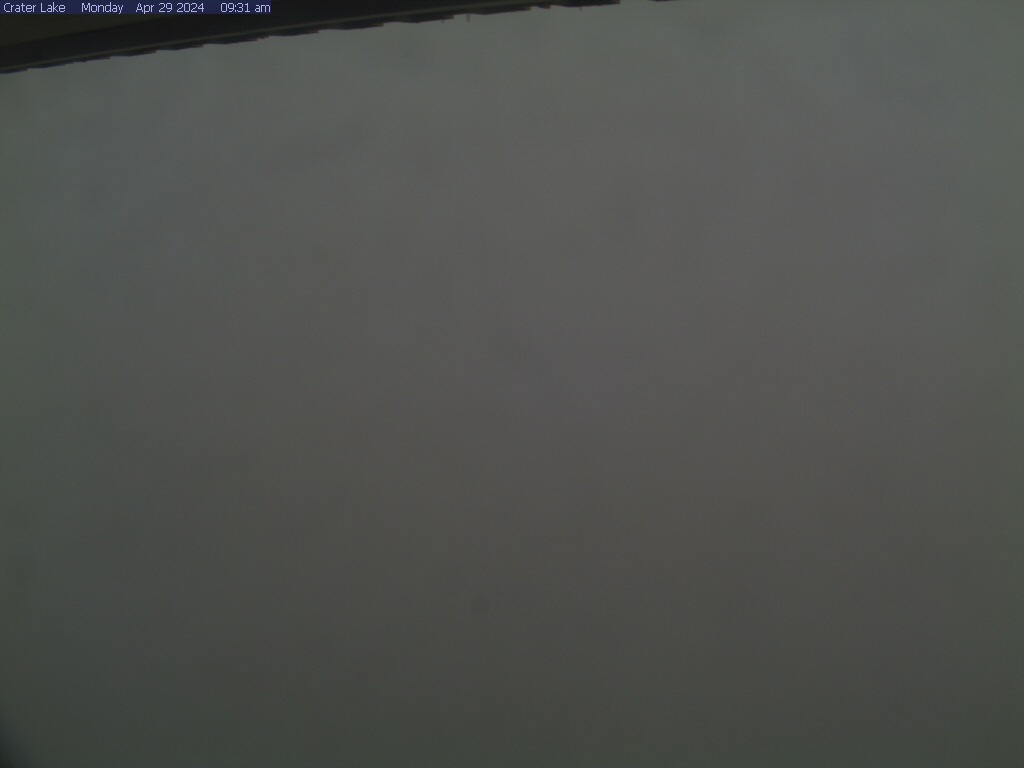
The Steel Visitor Center at Park Headquarters (elevation 6,450 feet) is currently closed for renovation. (Normally, it's open every day of the year except Christmas.) This view is useful in showing the amount of snow currently on the ground in the park. It can be 10 to 15 feet deep in the late winter and early spring. Refresh the page to update the view.

Curious about road conditions? This webcam can help you determine if the park's roads are icy. It looks south along Munson Valley Road from the Annie Spring Entrance Station (elevation 6,000 feet). The silver bar on the left is a flag pole. Refresh the page to update the view.
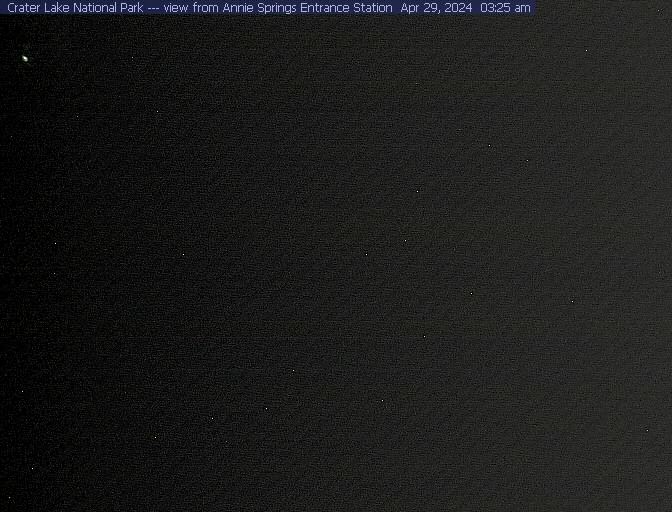
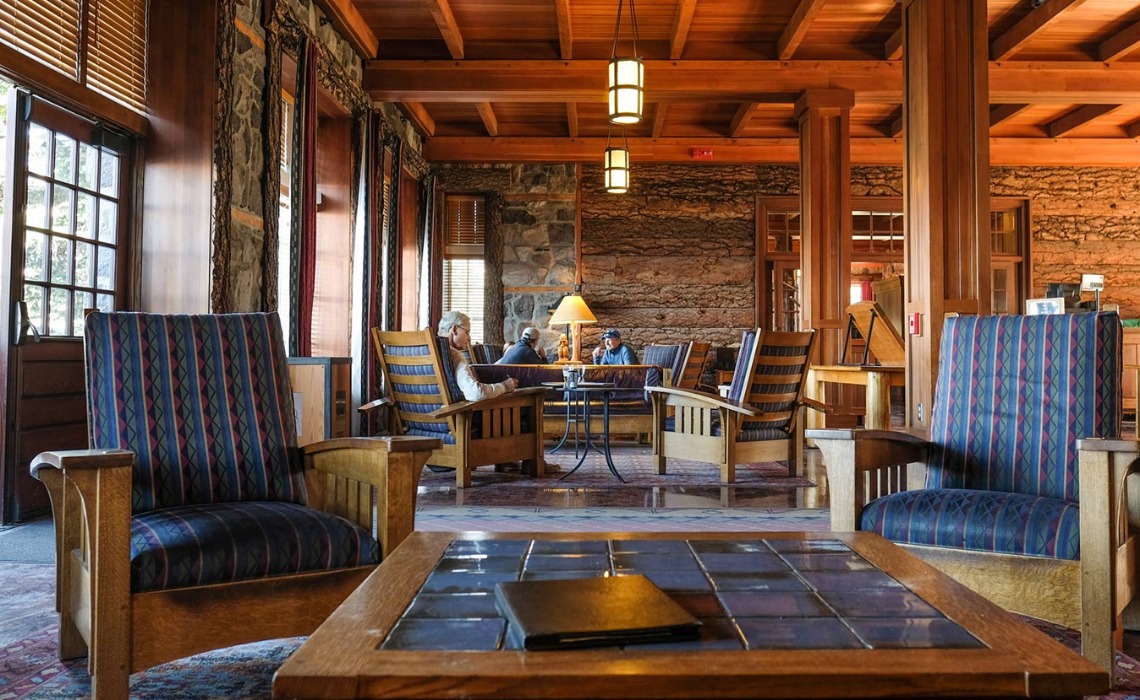
The lake's pristine blue waters and sheer cliff walls are as enjoyable from a cozy viewpoint as it is from the snowshoer viewpoint